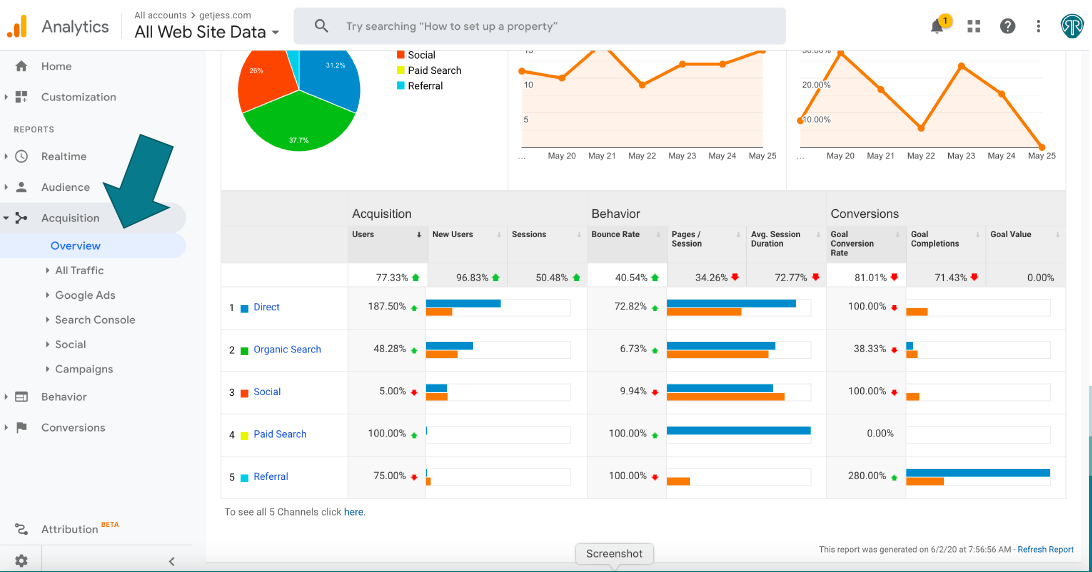Recognizing What is a "Dimension" in Google Analytics: A Comprehensive Guide
Recognizing What is a "Dimension" in Google Analytics: A Comprehensive Guide
Blog Article
Enhance Your Reporting Precision Using Google Analytics Dimensions: A Comprehensive Overview

Understanding Google Analytics Capacities

Google Analytics provides default measurements, such as "page views" and "session duration," yet individuals can likewise develop personalized dimensions to track details data points pertinent to their service goals. In verdict, mastering Google Analytics measurements is necessary for unlocking valuable understandings that can inform calculated decision-making and improve total performance.
Value of Data Accuracy
Moving past just comprehending Google Analytics dimensions, it comes to be noticeable that making sure information precision is critical in deriving significant insights and making informed service decisions. Data accuracy forms the structure upon which all succeeding analyses and decisions count. Incorrect data can lead to problematic conclusions, illinformed methods, and squandered resources. By guaranteeing the precision of your data, you can confidently trust the insights originated from Google Analytics dimensions, allowing you to make informed choices that drive company growth.
Data accuracy additionally fosters trust among stakeholders. Decision-makers are much more likely to have self-confidence in the understandings offered to them when records are based on reputable and precise information. This trust fund is vital for developing solid partnerships with companions, clients, and coworkers, as it shows a dedication to openness and integrity in your reporting methods.
Advanced Measurement Customization
Enhancing the depth of data analysis within Google Analytics involves diving into the world of Advanced Dimension Personalization. This attribute enables customers to develop custom measurements to more section and analyze data past the default measurements given by Google Analytics. what is a “dimension” in google analytics?. By specifying particular criteria that pertain to your organization objectives, you can get deeper insights into customer habits, campaign efficiency, and various other key metrics
Advanced Dimension Customization empowers customers to customize their analytics records to concentrate on the most essential elements of their site or application efficiency. Whether it's tracking communications with specific components, monitoring the actions of various individual sections, or examining the effect of personalized events, custom dimensions offer a powerful and versatile device for improving information evaluation abilities.
Executing Measurement Filters
Building upon the capacity to tailor measurements for sophisticated information evaluation, the following step in enhancing your Google Analytics understandings includes the execution of dimension filters. Measurement filters permit you to improve your information by including or leaving out particular values, providing an extra concentrated sight of your web site or app efficiency. By applying measurement filters, you can segment your data to evaluate the actions of certain user teams, track the efficiency of particular pages or areas, or exclude internal website traffic from your reports, ensuring that your understandings are based upon appropriate information.
To implement measurement filters in Google Analytics, navigate to the Admin area, pick the Sight where you wish to use the filter, and click Filters under the View column. From there, you can create a new filter, define the measurement you want to filter, established the filtering conditions, and use the filter to your data. By effectively using measurement filters, you can boost the accuracy and significance of your reporting, leading to more educated decision-making and enhanced overall efficiency.
Measurement Evaluation Strategies
When diving into the realm of dimension analysis in Google Analytics, recognizing different methods is paramount for drawing out valuable understandings. One vital method is segmenting measurements to isolate specific parts of data for in-depth analysis. By developing sections based upon dimensions like traffic sources or individual demographics, analysts can discover trends and patterns that might not be noticeable when looking at the data overall.
One more essential strategy is using custom dimensions to track extra info regarding individuals or communications on a site. Custom-made dimensions permit for a more granular evaluation of information, supplying much deeper understandings right into user habits and choices. By setting up customized measurements for certain events or user features, analysts can tailor their records to answer particular service questions.
Additionally, the technique of incorporating measurements can provide a much more extensive view of customer habits. By cross-referencing measurements like traffic sources with user locations or devices, experts can acquire a better understanding of More Bonuses exactly how different aspects influence individual communications on a site. Generally, understanding these measurement analysis methods can substantially improve the accuracy and depth of reporting in Google Analytics.
Conclusion
To conclude, grasping Google Analytics dimensions is important for boosting reporting accuracy and gaining beneficial understandings right into individual behavior. By utilizing both default and custom dimensions, organizations can tailor their analytics to reflect certain goals and metrics. Applying measurement filters permits refined analysis, concentrating content on appropriate data and excluding sound. Advanced segmentation and cross-referencing methods deepen understanding, allowing notified decision-making and strategy development based upon accurate, reputable details. This comprehensive strategy ensures data honesty and improves overall reporting techniques.
Measurements in Google Analytics are the features of your information, such as the source of traffic, the tool utilized, or the geographical place of the customer.Google Analytics supplies default dimensions, such as "page views" and "session period," however customers can also produce personalized measurements to track details information factors appropriate to their company goals.Moving beyond just recognizing Google Analytics measurements, it becomes evident that making certain data accuracy is critical in deriving meaningful insights and making enlightened service decisions.Structure upon the capability to personalize measurements for advanced data analysis, the following step in enhancing your Google Analytics insights includes the implementation of measurement filters. By applying dimension filters, you can sector your information to analyze the behavior of certain individual teams, track the performance of specific web pages or areas, or leave out inner website traffic from your records, ensuring that Related Site your understandings are based on pertinent data.
Report this page